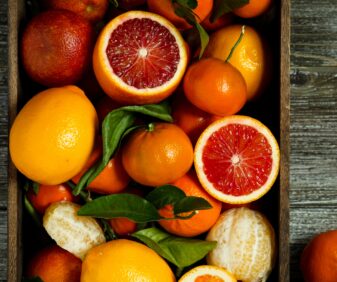


The most common answer to the question ‘how to lose weight?’ is ‘eat less! It is easy to advise, however, but it is much more difficult for us to change our eating habits. Fortunately, there are several ways that can help us to eat less.
The most common answer to the question ‘how to lose weight?’ is ‘eat less! The advice is easy, however, but it is much more difficult for us to change our eating habits. Fortunately, there are several ways in which we can help us to eat less.
LET US BE REASONABLE.
- Let us not absorb food in a hurry, let us eat slowly, chewing every bite carefully.
- Do not use draconian diets and do not rely on unproven dietary advice.
- Avoid distractions (e.g. watching TV) while eating.
- Enjoy, focusing on the taste of what you eat.
- Be patient and refrain from reaching for extra portions or dessert.
- Immediately after a meal – let’s give your body time to reach a feeling of satiety.
- Let us make sure that everything that could be tempting for us is as far away from us as possible.
- Don’t make unnecessary supplies
- Let us serve dishes on smaller plates – then our portions will seem bigger.
IT’S TIME TO LIKE THE FIBRE
Fibre, otherwise known as dietary fibre, is the remains of plant cells that are resistant to the digestion process by enzymes in the digestive tract. They remain undigested in the intestine, and then move on to the colon, where they are partially hydrolysed by the bacteria that are there. What is the relationship between the presence of dietary fibre in our meals and the fact that we will eat less? The specificity of this ingredient is that it increases the absorption time of glucose. It protects us in this way from a large drop in insulin in our blood and then a drop in glucose levels, which results in a rapid feeling of hunger after a meal. Fibre also has the ability to bind water. By swelling, they increase the volume of our meal, making us feel full for longer. A by-product of the decomposition of fibre is short-chain fatty acids, which provide a nutrient for our intestinal microflora. The condition of the microflora is closely related to the amount of energy obtained from the food, which in turn has an impact on the development or inhibition of obesity.
Which, for example, food sources are the richest in terms of fibre content?
Vegetables – broccoli, beetroot, carrot, parsley, turnip, Brussels sprouts, swede.
Fruit – apples, pears, strawberries, raspberries, berries, currants, gooseberries.
Cereal products – groats, brown rice, cereal flakes, bran, whole grain bread.
LET’S SEE THE GLYCEMIC INDEX
It allows us to assess how blood glucose levels increase after eating a particular product. The feeling of satiety will accompany us for a long time after consuming products with a low glycemic index. Let us avoid those whose high glycemic indexes cause a rapid drop in insulin and a rapid drop in glucose, because they will make us feel hungry again too soon. We should therefore limit:
- wheat-flour based products (e.g. wheat-flour pasta) and wheat bakery products
- sweet carbonated drinks
- sweets and confectionery: cakes, pastries, cakes, cakes, yeasts, doughnuts, puff pastries, etc.
- most of the ready-made mixtures of breakfast cereals, cornflakes and rice
- white and roasted rice
- fries, crisps, baked potatoes
Let us remember that shredding and shredding increases IG. Cooked rye flour pasta al dente will have a lower GI than uncooked wheat pasta.
However, we can use products from the group with the lowest glycemic index without any fear. These are among them:
- milk and unsweetened milk products
- eggs,
- meat, fish, seafood
- leguminous vegetables – soybean, chickpeas and lentils have the lowest values, while slightly larger beans and green peas have the lowest values
- certain groats – coarse-grained bulgur, burnt and unroasted buckwheat
- Wild rice and quinoa rice
- wholemeal rye bread
- wholemeal noodles
- unprocessed amaranth
- vegetables in raw form
- most fresh fruit – the more ripe the fruit, the higher the index is
- nuts and seeds
- oils
Each of us should improve our knowledge of low and high glycemic index products in order to create a balanced diet. In the case of specific nutritional needs, however, it is worthwhile to use the help of a nutritionist.








